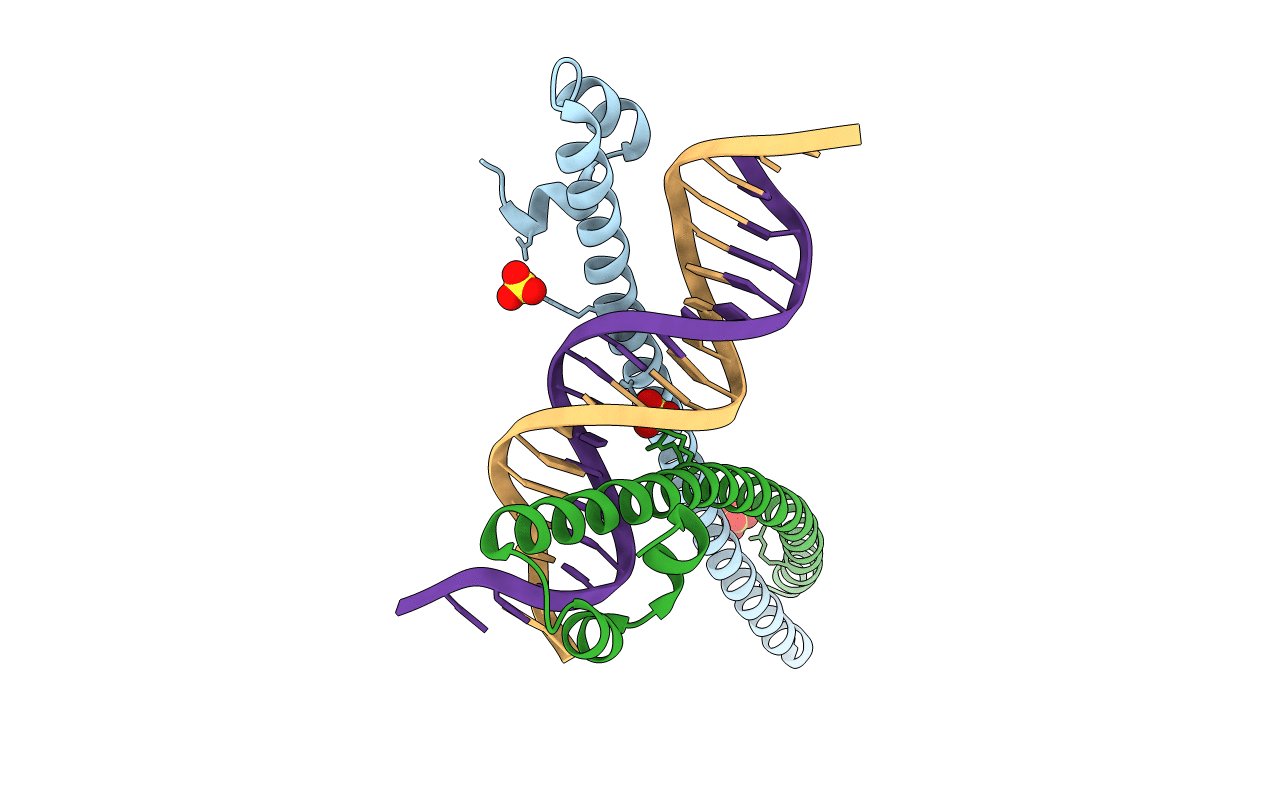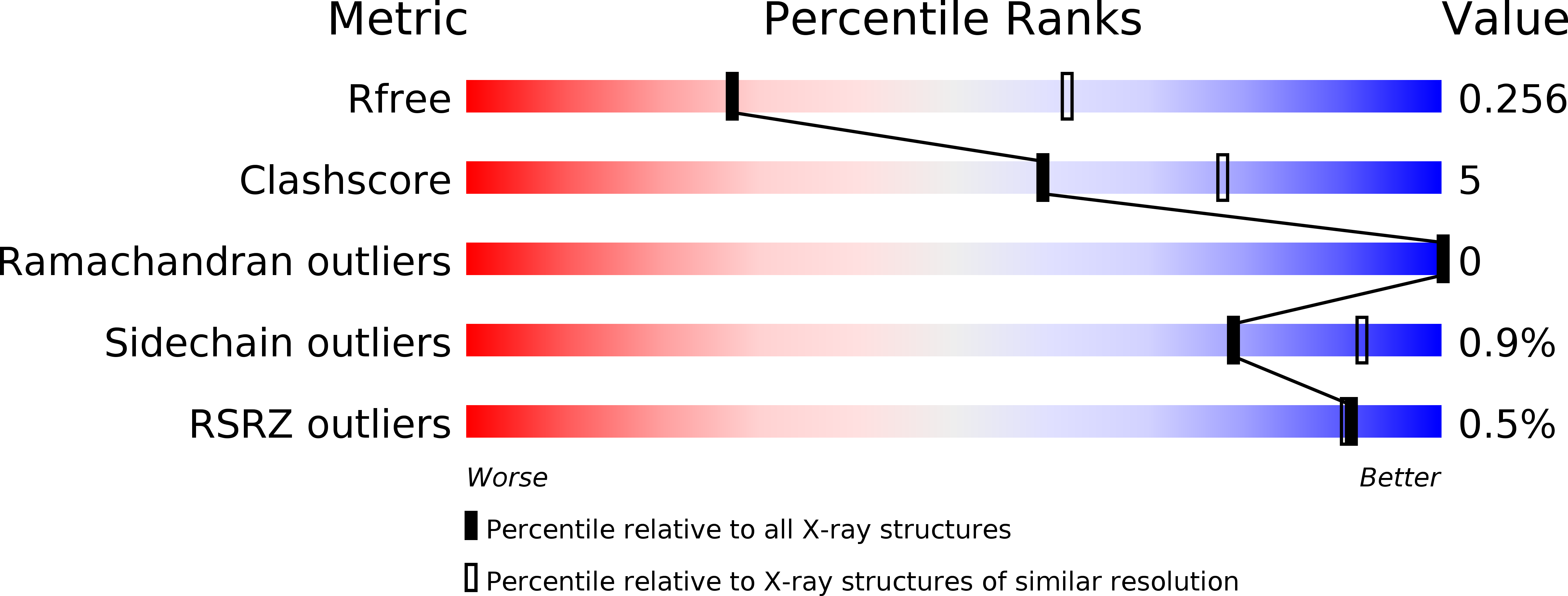
Deposition Date
2012-04-15
Release Date
2012-11-28
Last Version Date
2023-09-13
Entry Detail
PDB ID:
4EOT
Keywords:
Title:
Crystal structure of the MafA homodimer bound to the consensus MARE
Biological Source:
Source Organism:
Homo sapiens (Taxon ID: 9606)
Host Organism:
Method Details:
Experimental Method:
Resolution:
2.86 Å
R-Value Free:
0.25
R-Value Work:
0.22
R-Value Observed:
0.22
Space Group:
P 31 2 1


